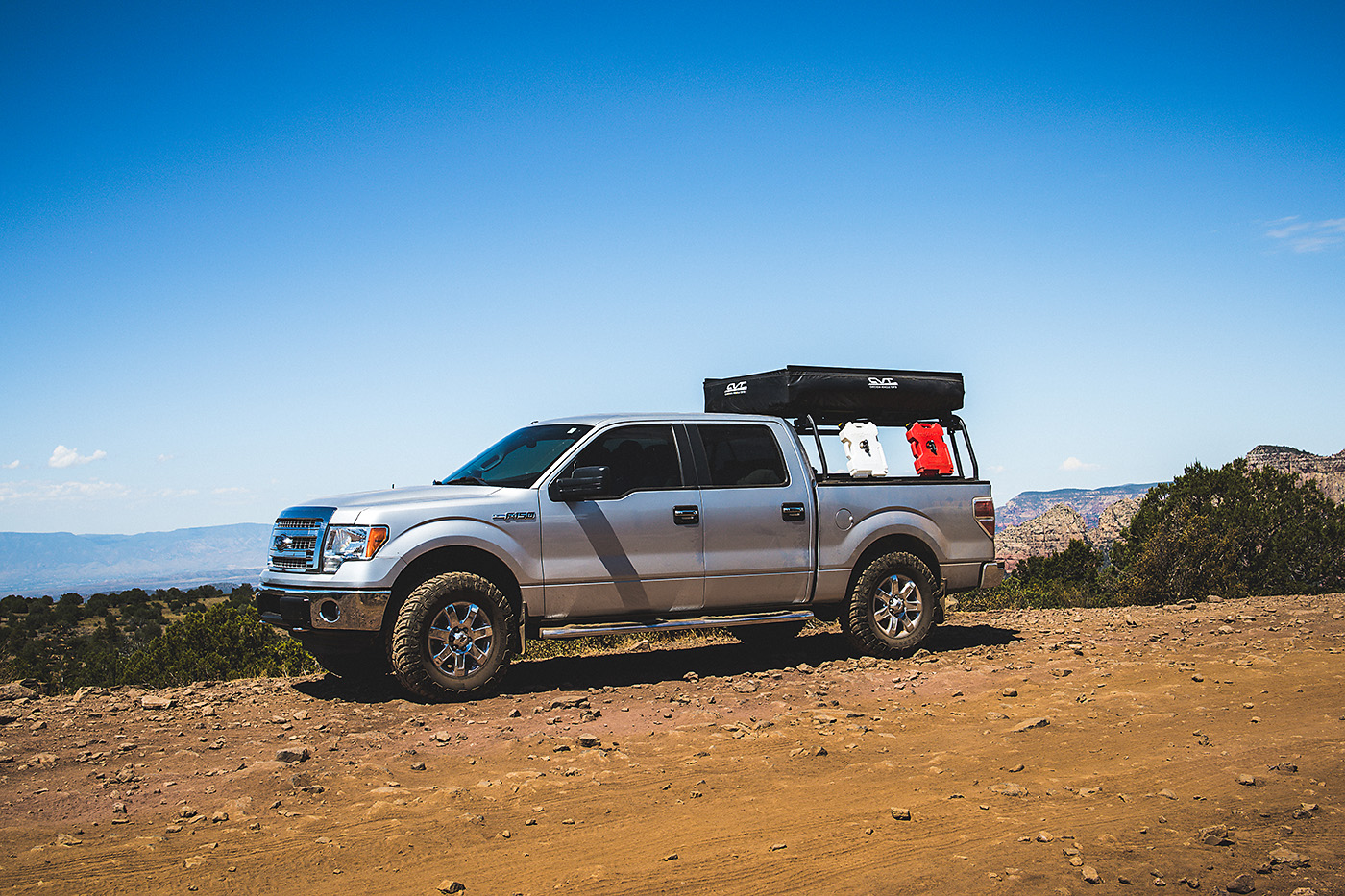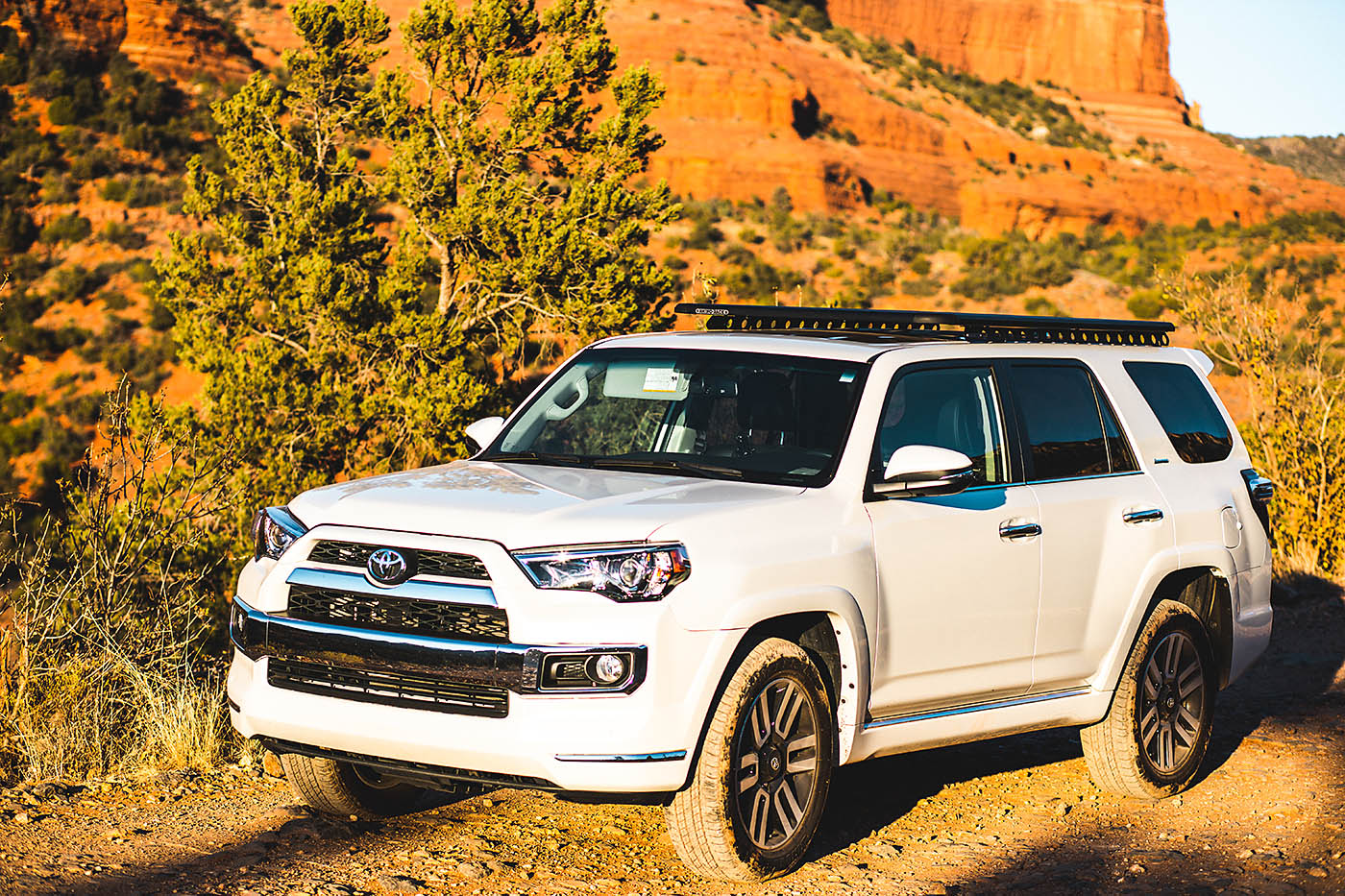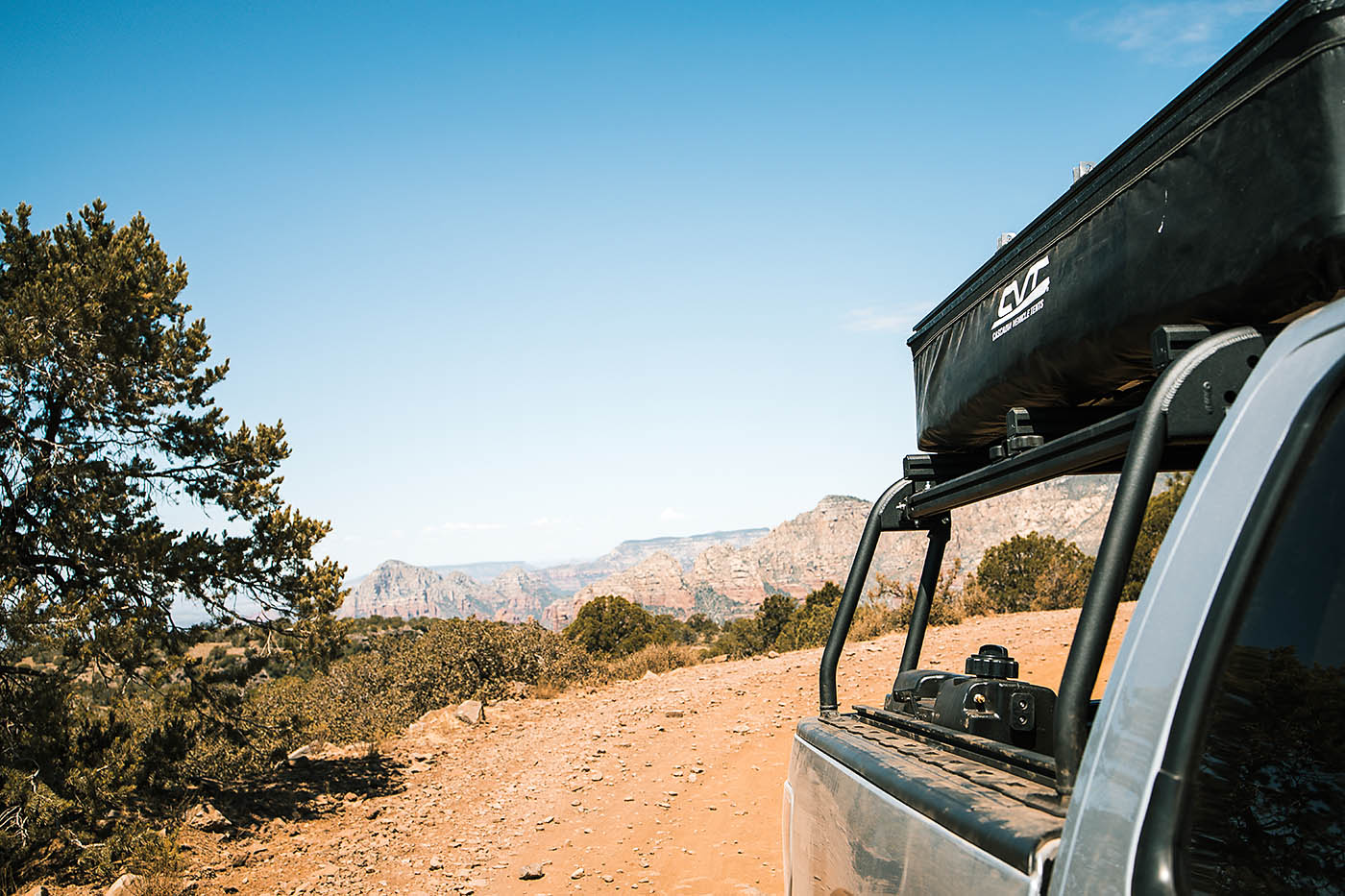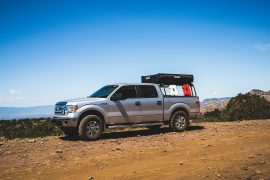We may earn money or products from the companies mentioned in this post. Please see policies for more information.
One of the things we see being discussed or misunderstood a lot by people just getting into overlanding or camping via a rooftop tent is the size/weight issue and wondering if your car can hold a rooftop tent. There are a few different weights and dynamics in play when choosing a rack system and tent size so we’ll try to help get all the information you need in one place to make your decision easier.

Understanding Weights When Looking at a Rooftop Tent or Rack for Your Vehicle
The first thing is to find out is the load rating from the manufacturer of your vehicle. This is the total amount of weight that the vehicle roof can handle. For safety reasons, you should never go over this weight. It’s possible that the rack system you choose may be rated for a heavier weight, but going over could possibly damage your vehicle. There are 3 main types of load ratings you will need to figure out in order to find the proper set up that will suit your needs.

Types of Load Ratings to Look at When Choosing a Roof Rack for a Rooftop Tent
- Static Load Rating – The weight rating while the vehicle is stationary. This will often be much higher than the dynamic load rating.
- On-Road Dynamic Load Rating – The weight rating while driving on paved roads.
- Off-Road Dynamic Load Rating – The weight rating while driving on dirt, rough terrain, or other unpaved roads.
You will need to determine what kind of trips you are likely to be taking in order to figure out what rack system will be best for you. Will you be driving mostly paved roads to a developed campsite or will you be driving back for miles on rough roads to get away from civilization?
Once you have determined the type of rack you are system you are going with, you will then be able to figure out your Cargo Rating. This is the amount of gear (roof top tent, luggage, water, etc.) you can carry on your rack. To determine this take your vehicle load rating and subtract the weight of you roof rack and the accessories (tray, cargo rack, etc). This will tell you what your cargo load rating is.

Choosing a Vehicle Roof Rack to Meet Your Needs
For many, the addition of aftermarket crossbars will be enough for their needs. This will be the easiest for installation and a more price-conscious route. We recommend sticking with one of the main aftermarket brands that have a good track record such as Thule, Yakima, or Rhino-Rack. This is likely the case for a couple or small family that is looking for an RTT that will hold 2-3 people.
For larger and heavier tents that will accommodate a bigger family, it is likely that a full rack system like the Rhino-Rack backbone (seen on our 4 Runner with the platform) or Frontrunner rack will be needed for an SUV. These require you to remove the factory rails on your vehicle to install.

If you have a truck you may want a truck rack system such as the Leitner ACS bed rack. These systems will involve a little more mechanical skill to install, but many shops offer professional installation if needed. They do come with a higher price tag but are well worth it to ensure proper safety. Again, please check with the manufacturer of your vehicle and/or the rack if you are unsure.

We have found that most of the rack manufacturers are more than willing to help guide you in the right direction over the phone. We also like searching social media for other people who have our same vehicle with a rack/tent setup.



